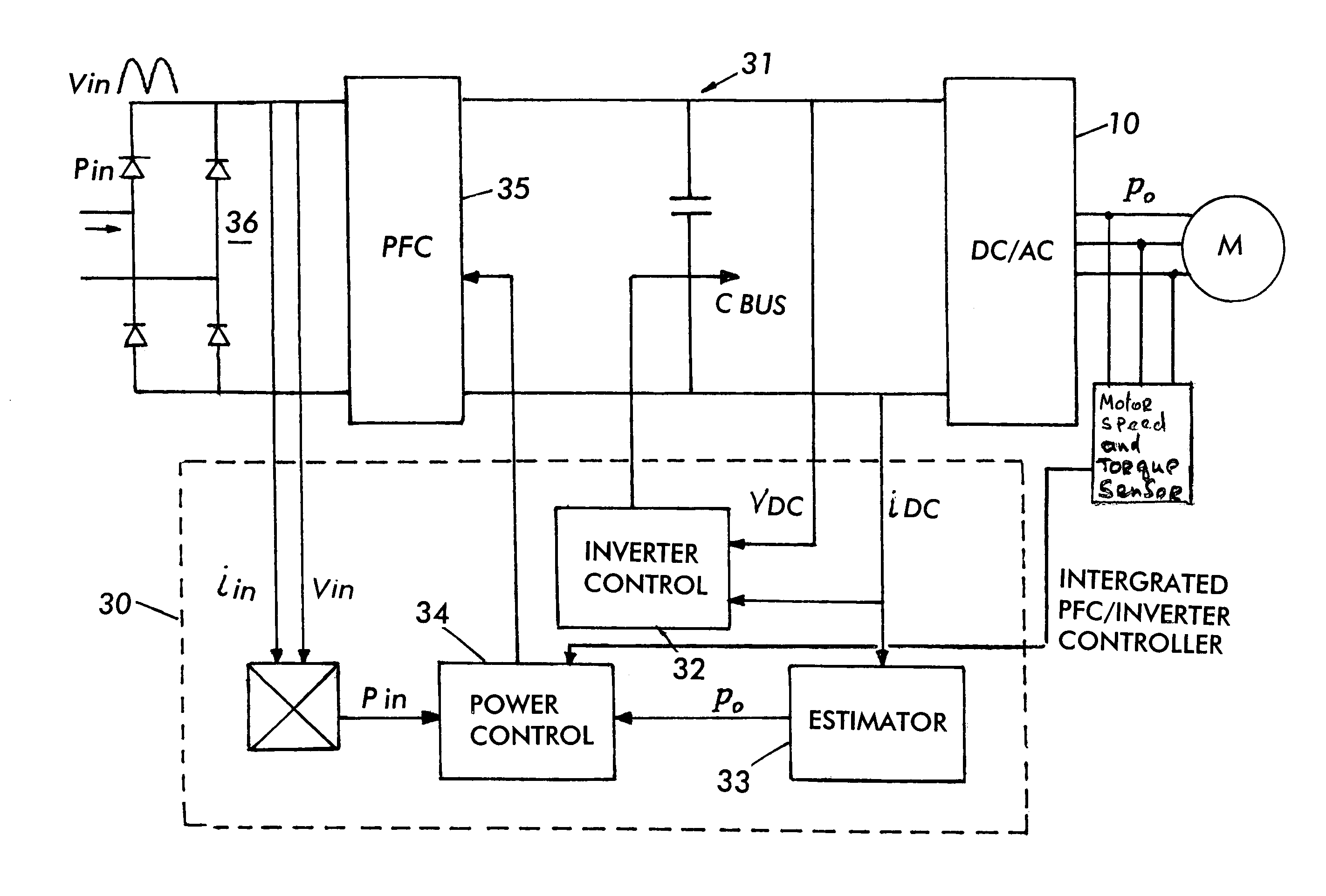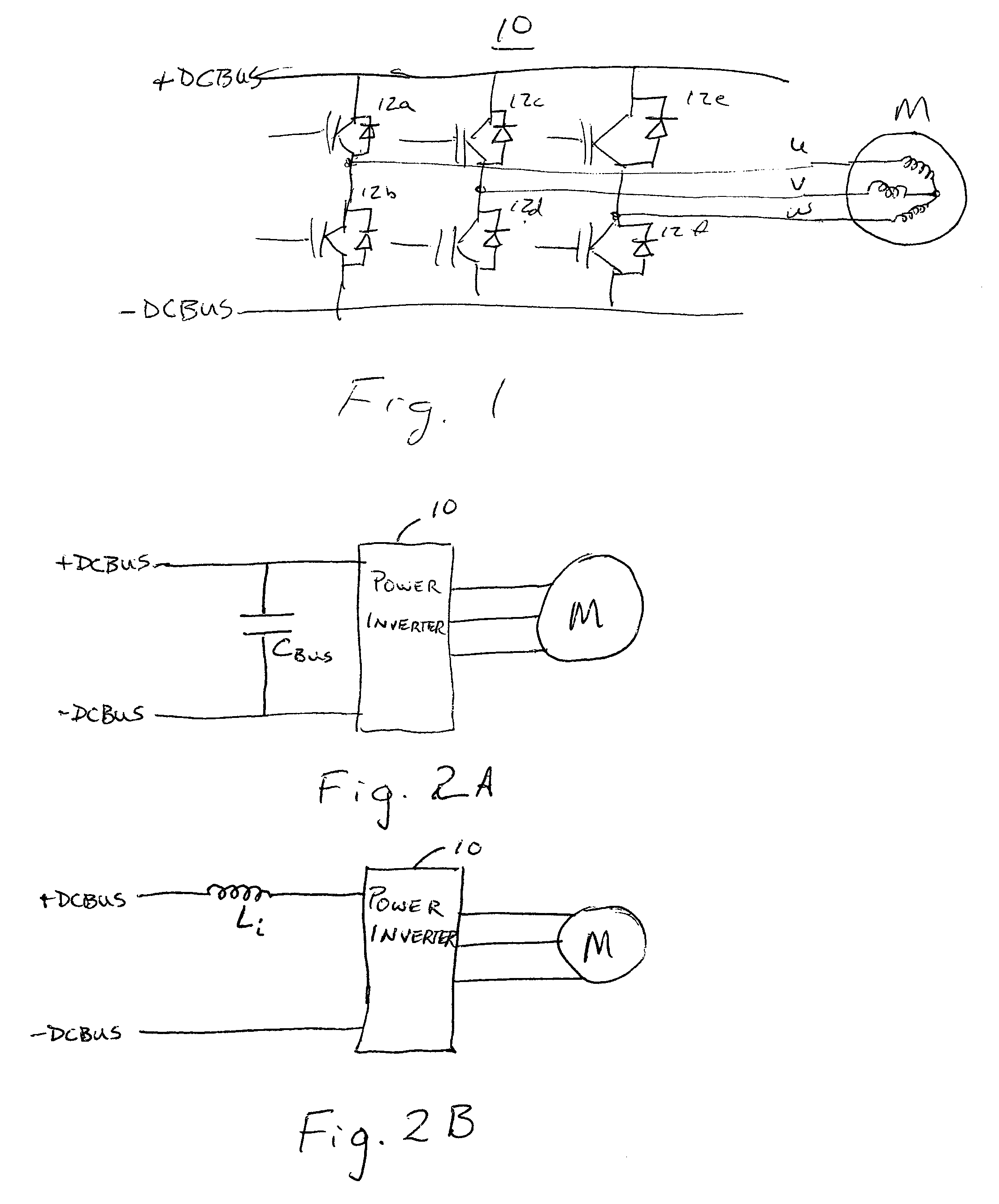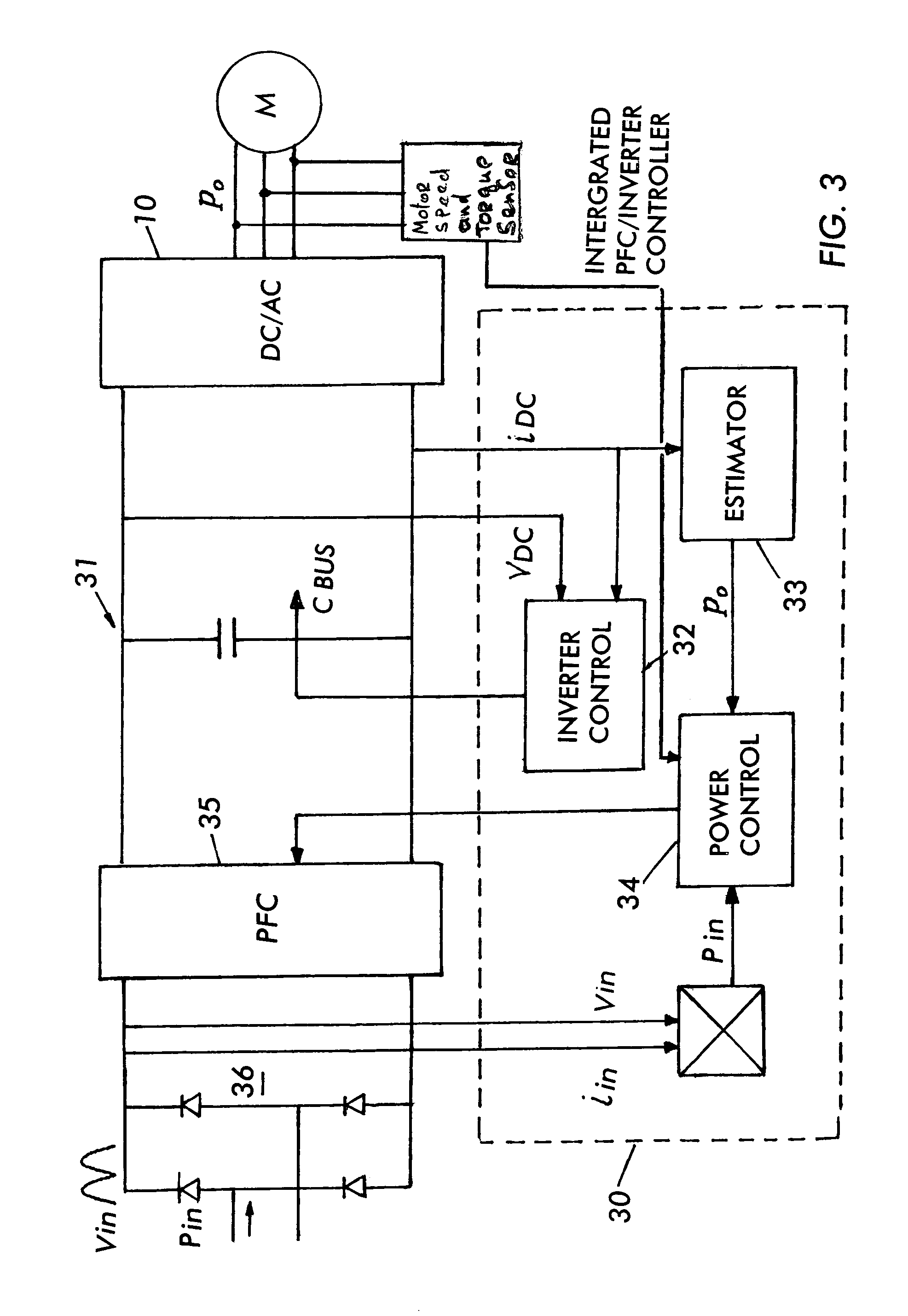Power transfer system with reduced component ratings
a power transfer system and component rating technology, applied in the direction of dynamo-electric converter control, process and machine control, instruments, etc., can solve the problems of large components with appropriate ratings, short service life, and low service life of components, so as to reduce the requirement of passive components, minimize the ripple voltage of the bus, and high performance
- Summary
- Abstract
- Description
- Claims
- Application Information
AI Technical Summary
Benefits of technology
Problems solved by technology
Method used
Image
Examples
Embodiment Construction
[0017]Referring now to FIG. 3, a control 30 for a motor drive system 31 is shown. Control 30 includes an inverter control 32, and estimator 33 and a power control 34. Inverter control 32 is a closed loop control for inverter 10, using as feedback signals the bus voltage VDC and the bus current IDC. Inverter control 32 provides signals for switching the power switches in inverter 10 according to an appropriate profile to obtain a desired control output for motor M. For example, motor M can be operated for torque control or velocity control based on the switching signals obtained from inverter control 32 in conjunction with the bus feedback signals VDC and IDC. Inverter control 32 can also contribute to realizing soft switching, or switching with zero current, to avoid switching losses. It should be apparent, that inverter control 32 can provide switching signals to operate inverter 10 as a single or multiple phase power supply. Power inverter 10 in motor drive system 31 is a voltage ...
PUM
 Login to View More
Login to View More Abstract
Description
Claims
Application Information
 Login to View More
Login to View More - R&D
- Intellectual Property
- Life Sciences
- Materials
- Tech Scout
- Unparalleled Data Quality
- Higher Quality Content
- 60% Fewer Hallucinations
Browse by: Latest US Patents, China's latest patents, Technical Efficacy Thesaurus, Application Domain, Technology Topic, Popular Technical Reports.
© 2025 PatSnap. All rights reserved.Legal|Privacy policy|Modern Slavery Act Transparency Statement|Sitemap|About US| Contact US: help@patsnap.com



